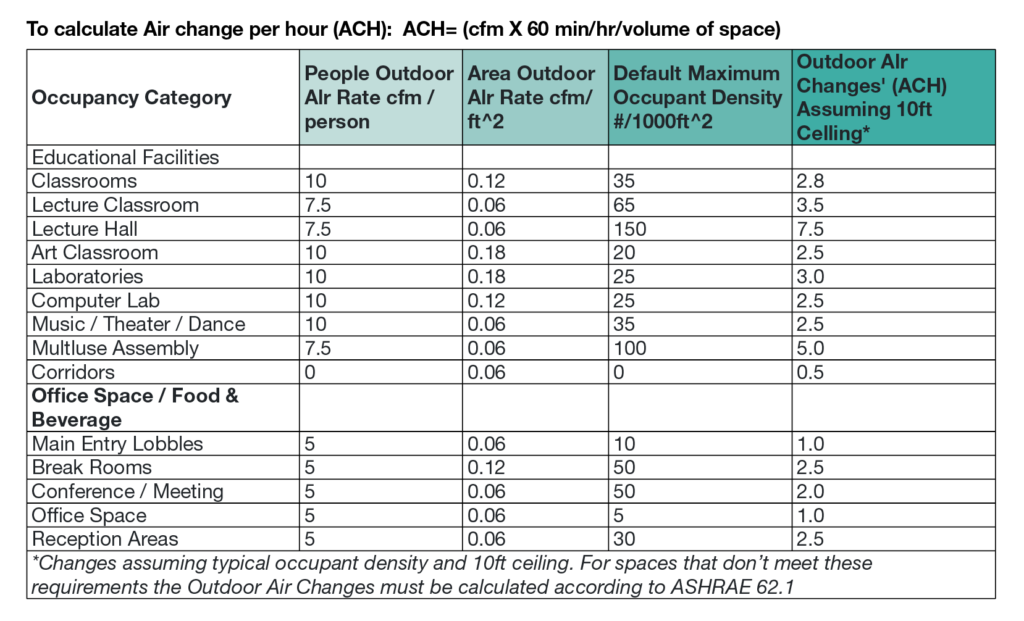Then we can start thinking about the more high-minded approach to a better IAQ future, says Jeremy McDonald
Business owners and facility mangers are increasingly recognizing that the management of Indoor Air Quality (IAQ) is one of the key fundamentals to protecting building occupants. Poor IAQ has certainly proved to be a major contributor to the deadliness of the COVID-19 viral spread.
Through my 25 years of conducting HVAC facility assessments, I have observed some extremely substandard HVAC ventilation systems. Sadly, too often I have found these substandard systems in our most dense urban areas, in Nursing Homes and Multi-family buildings that serve people who are at high risk of experiencing health issues.
This column will explore the simple time-tested strategy of improving ventilation that business owners and facility managers can use to minimise viral spread and improve IAQ in non-crisis situations. By improving ventilation, we can give business occupants a more enjoyable and safer experience in the environment where we spend more than 90% of our time: inside of buildings.
One challenge in determining air quality is that air is invisible. While there are some noticeable signs that we have poor air quality (i.e. stuffiness, odours), we do not often have the benefit of an obvious visual like we do with water. For this reason, we need to be able to measure some key variables.
The role of ventilation
There should be no surprise that the preponderance of COVID-19 cases are due to indoor air environments and lack of air exchange. While outdoor air exchanges are typically on the order of more than 500-1,000 air changes per hour (ACH), depending on wind-speed and physical constraints, we typically experience lower air exchange rates indoors: between 1 and 3 ACH for an average office or school.

Jeremy McDonald
To think about the role of ventilation, one only needs to imagine the pristine waters of a running stream or river, as compared to the dank and putrid water quality of a sequestered pond with no freshwater supply. Most of us would much rather get our water supply from the moving waters of the flowing stream (think moving ventilation), versus the staid pond (think no exchange of indoor air).
When it comes to quality, indoor air is no different than water—the more exchange the better. For good IAQ, buildings need to “breathe” and be given an opportunity to expel toxic buildup, which includes viral particles. Without proper working ventilation—both supply and exhaust— building occupants are exposed to longer durations, increasing the chances of the building occupant getting sick.
Most local building codes require that absent operable windows, buildings be provided with a minimum amount of fresh air. The table, below, demonstrates the typical air exchanges for a college setting. From the table we see the typical calculated air exchange ranges from very low (0.5 ACH for corridors) to higher values (7.5 ACH for lecture halls). Of course, the required ACH will be dictated by the details of each individual case, but in my experience the values indicated in this table represent typical values.
Of course, calculated values, usually done as part of the HVAC design, can be vastly different than the real-world values. To verify current ventilation values, a qualified testing and balancing contractor can take airflow measurements. Measured airflow can be compared to the required design value, and adjustments can be made to “retro-commission” the airflows back to the original design intent.

When measuring airflow, it is important to measure the total airflow (what the room experiences), and the outdoor airflow, what provides dilution air for the space. Both factors are important to provide good IAQ. The total airflow will be measured in the space, while the outdoor air flow will be measured at the HVAC equipment, usually an air-handling unit outdoor air intake or a unit vent outdoor air intake.
Continuous Commissioning: A proactive approach to maintaining ventilation
While measurements are taken, problems and deficiencies should be expected. Facilities are living buildings, and just like the human body, degradations and problems should be expected over time. A good TABB contractor will identify the problem and work with facilities to fix the problem and offer a long-term solution.
In the photo (below), which shows an air filter sucked into the heat wheel, a few problems can be observed. First, since the filter wasn’t changed in some time, it became quite dirty, came loose from its support, and became airborne, ultimately being sucked into the unit. Since the unit operated with no filters for some time, the heat wheel, which is intended to recover air side energy from the building exhaust, has become dirty, reducing the unit efficiency.
The short-term fix is to replace the filters and clean the heat wheel. Long term, for an issue such as this, I recommend the following:
1. Review the filter replacement schedule. While manufactures will provide a recommended replacement schedule (about 3-6 months), the schedule will vary as a function of operating hours of the unit, local weather conditions, time of year, and facility culture.
2. Add airflow measuring device. This particular unit in the photo also suffered from very high air velocity, which contributed to the filters being sucked into the unit. By monitoring the airflow, the system can be trended and alarms set for when the airflow is less than the desired amount, thus ensuring adequate ventilation at all times.
3. Add pressure measuring device for the filter. By monitoring pressure drop across the filter, facility staff can be alerted when the filter is ready to be replaced.
4. Tie in sensors to BMS. To make staff’s job easier, the added data points (air flow and pressure drop in this case) can be tied into the building management system. Alarms can be set so that staff are notified when there is an issue (i.e. high/low airflow, or high pressure drop across the filter), and then rectify the problem.
5. Update Standard Operating Procedures (SOP) to ensure that critical data points are monitored on a continuous basis.
By incorporating lessons learnt into Standard Operating procedures, staff can improve IAQ and know what to look for the next time the system doesn’t seem to be working correctly.
Ongoing monitoring of ventilation: Better IAQ through Continuous Cx
Improving ventilation is a challenge. As discussed in this article, fixing ventilation systems requires engineering assessment, testing and balancing, and ultimately, fixing the problem. With the effort required to identify and fix issues, a little added documentation and also leveraging data monitoring tools (which I will address in a future column in this series) can go a long way.
Below is a trend from a project in the summer of 2020, in an office in upstate New York. After several staff complaints of “stuffiness,” the facility owner installed a CO2 data logger to evaluate the situation. After a few days of testing, it was clear the CO2 level (which is a relative indicator of IAQ) was rising each day in the mid-afternoon (3pm-5pm). A subsequent investigation revealed that the outdoor air damper for the space was closed. The outdoor air damper was fixed and the CO2 levels dropped to a more manageable level.
Conclusion
Like human health, the road to healthy indoor air takes hard work and persistence. Just like we rely on medical professionals for our personal health, we need to rely on HVAC engineers and Test and Balance contractors to fix what ails our HVAC systems when problems arise.
But experts are not enough. When it comes to our personal health, we are still responsible as individuals for eating a healthy diet and monitoring our weight and vitals. Likewise, individual building owners can do much more to keep our HVAC systems fit and working in good condition between visits from HVAC pros. Through monitoring of key data points such as ventilation rates, we can ensure that our HVAC is performing as it should and protecting our building occupants.
Copyright © 2006-2025 - CPI Industry. All rights reserved.